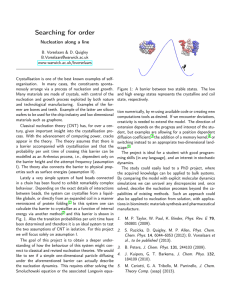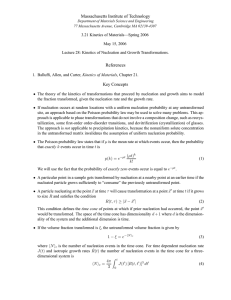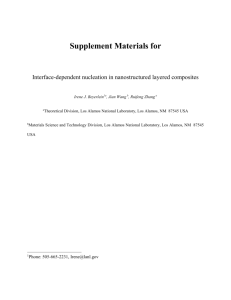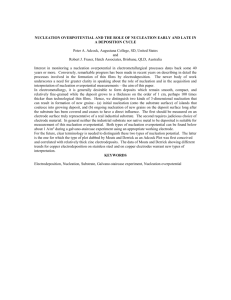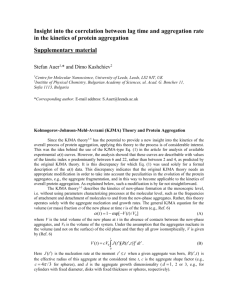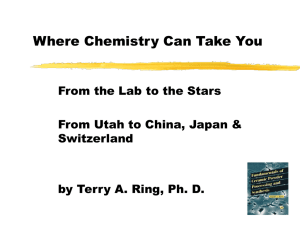Document 13554855
advertisement
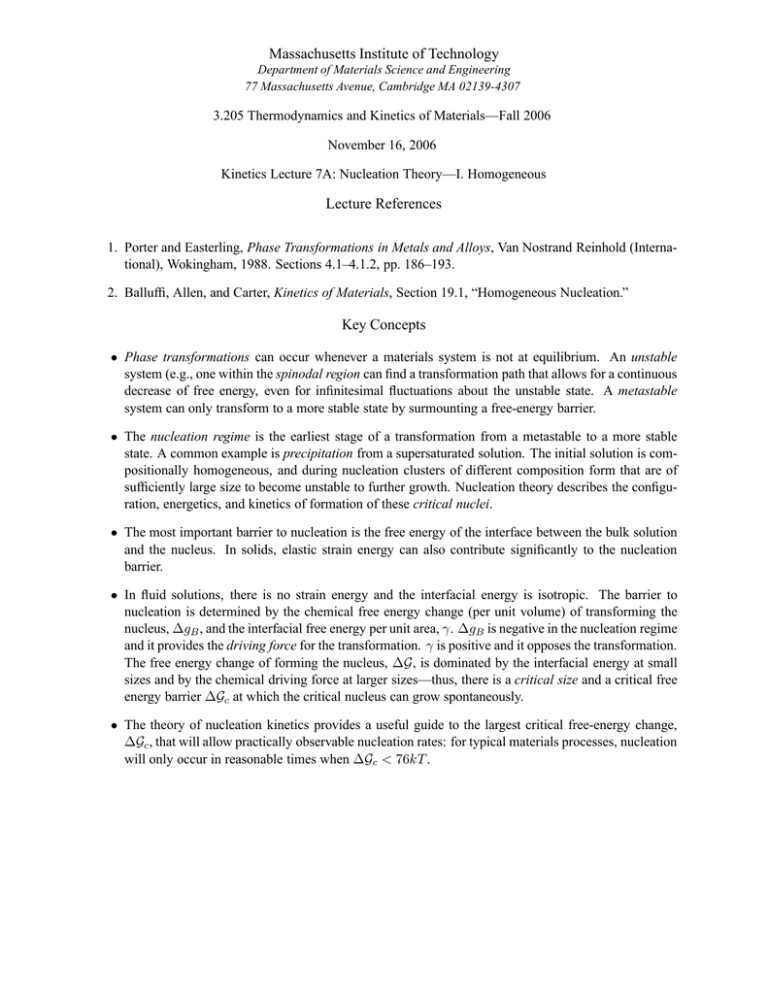
Massachusetts Institute of Technology Department of Materials Science and Engineering 77 Massachusetts Avenue, Cambridge MA 02139-4307 3.205 Thermodynamics and Kinetics of Materials—Fall 2006 November 16, 2006 Kinetics Lecture 7A: Nucleation Theory—I. Homogeneous Lecture References 1. Porter and Easterling, Phase Transformations in Metals and Alloys, Van Nostrand Reinhold (Interna­ tional), Wokingham, 1988. Sections 4.1–4.1.2, pp. 186–193. 2. Balluffi, Allen, and Carter, Kinetics of Materials, Section 19.1, “Homogeneous Nucleation.” Key Concepts • Phase transformations can occur whenever a materials system is not at equilibrium. An unstable system (e.g., one within the spinodal region can find a transformation path that allows for a continuous decrease of free energy, even for infinitesimal fluctuations about the unstable state. A metastable system can only transform to a more stable state by surmounting a free-energy barrier. • The nucleation regime is the earliest stage of a transformation from a metastable to a more stable state. A common example is precipitation from a supersaturated solution. The initial solution is com­ positionally homogeneous, and during nucleation clusters of different composition form that are of sufficiently large size to become unstable to further growth. Nucleation theory describes the configu­ ration, energetics, and kinetics of formation of these critical nuclei. • The most important barrier to nucleation is the free energy of the interface between the bulk solution and the nucleus. In solids, elastic strain energy can also contribute significantly to the nucleation barrier. • In fluid solutions, there is no strain energy and the interfacial energy is isotropic. The barrier to nucleation is determined by the chemical free energy change (per unit volume) of transforming the nucleus, ΔgB , and the interfacial free energy per unit area, γ. ΔgB is negative in the nucleation regime and it provides the driving force for the transformation. γ is positive and it opposes the transformation. The free energy change of forming the nucleus, ΔG, is dominated by the interfacial energy at small sizes and by the chemical driving force at larger sizes—thus, there is a critical size and a critical free energy barrier ΔGc at which the critical nucleus can grow spontaneously. • The theory of nucleation kinetics provides a useful guide to the largest critical free-energy change, ΔGc , that will allow practically observable nucleation rates: for typical materials processes, nucleation will only occur in reasonable times when ΔGc < 76kT .


